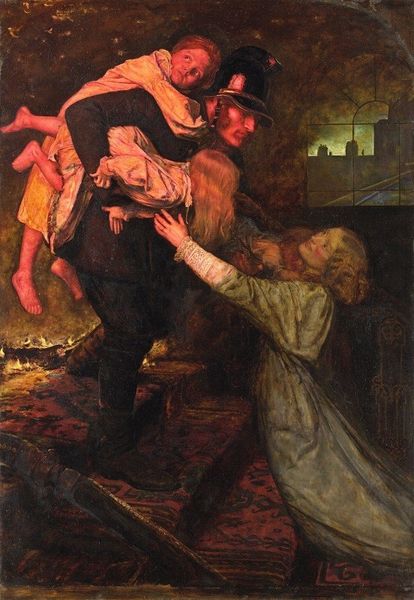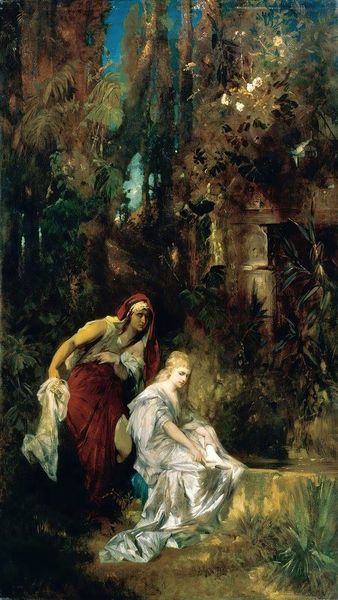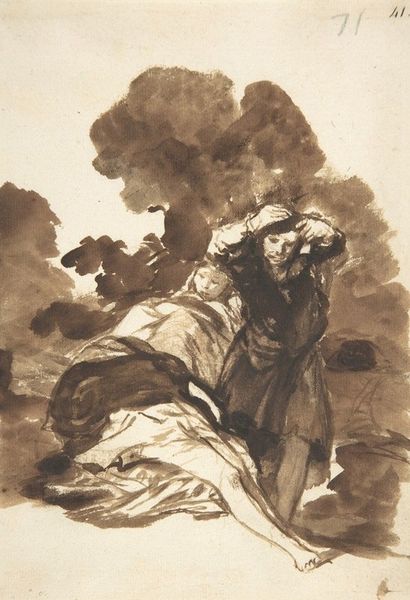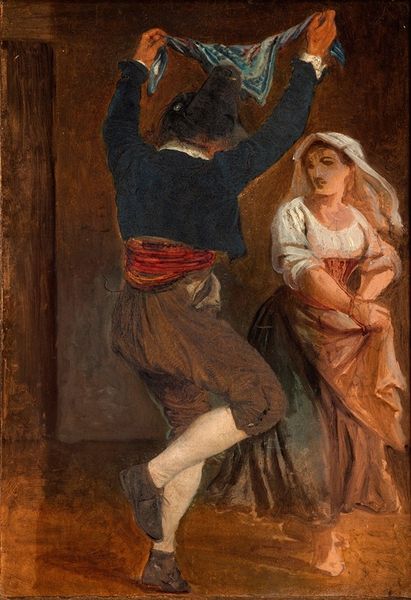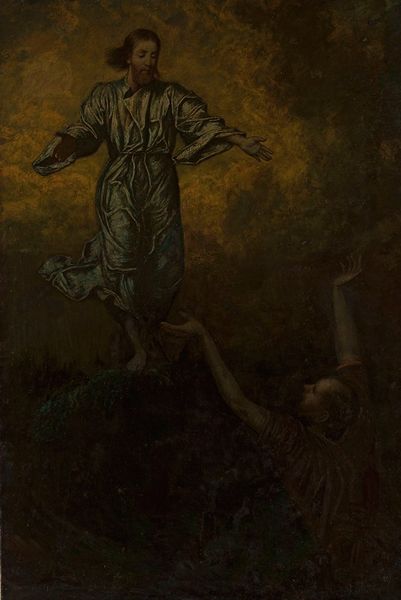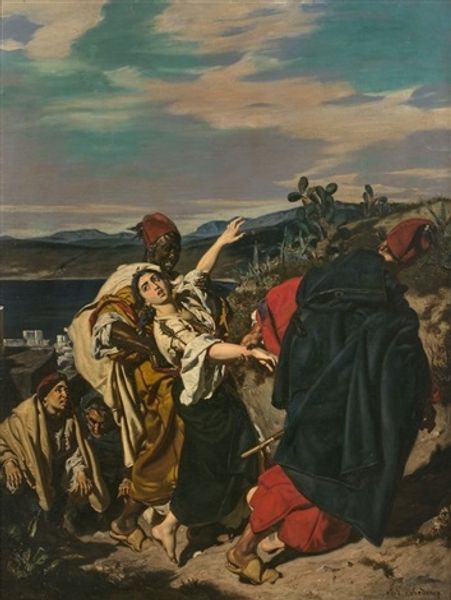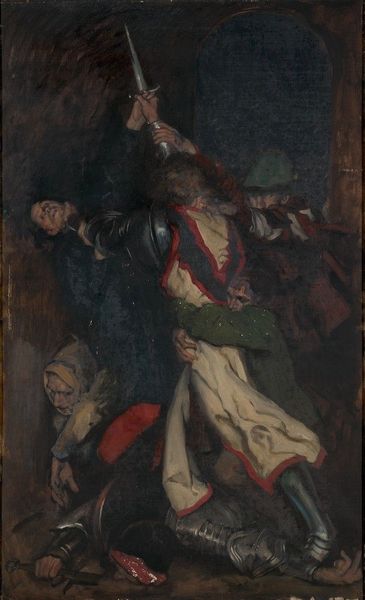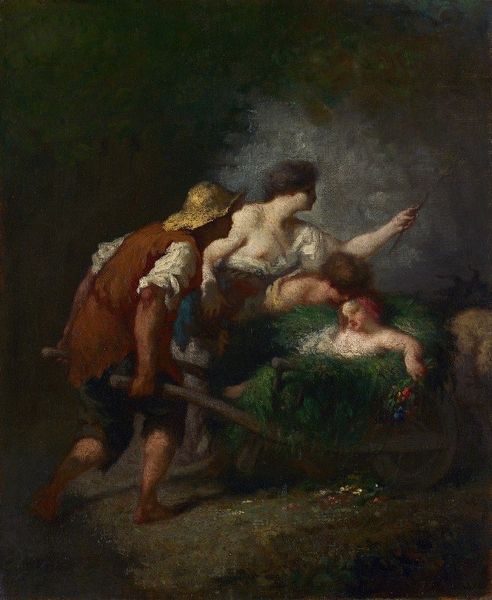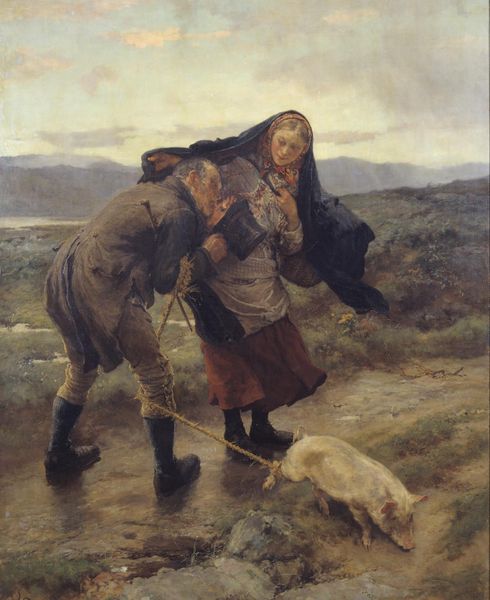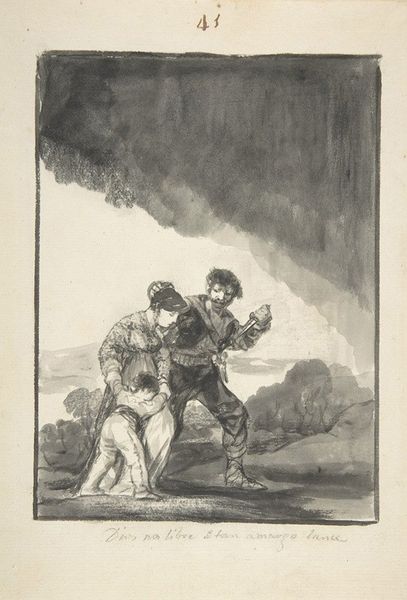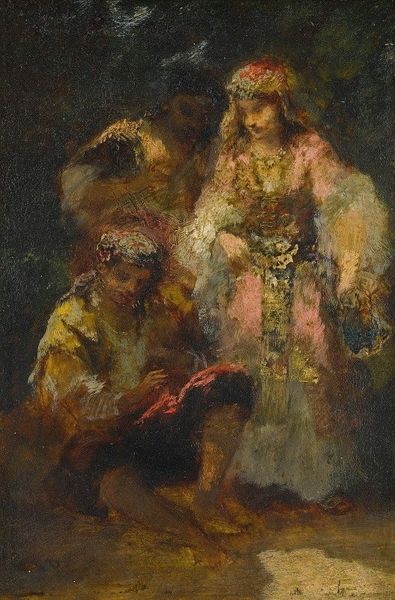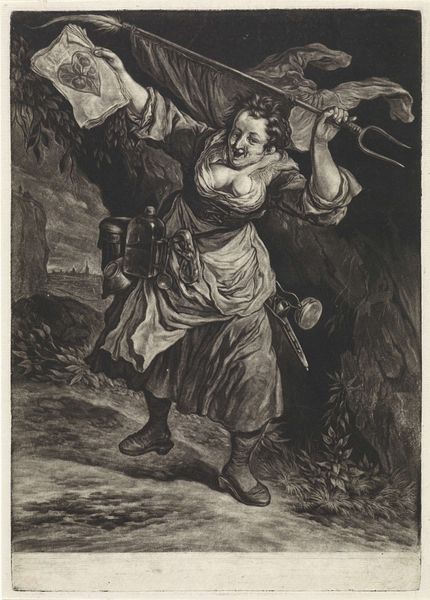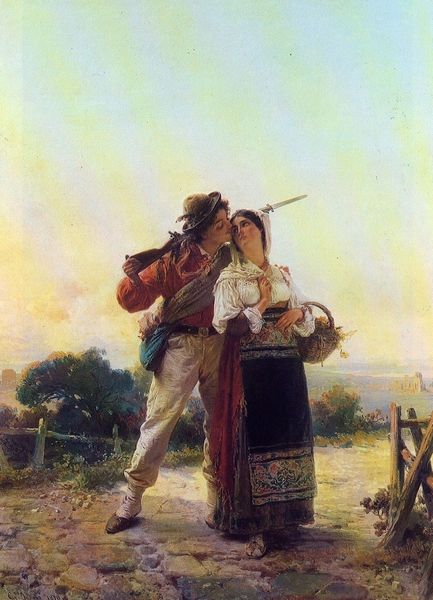
Copyright: Public Domain: Artvee
Curator: Alright, let’s dive into “The Crown of Love,” crafted by Sir John Everett Millais in 1875, a work rendered meticulously with oil paints. Editor: Immediately, it reads as classic melodrama, doesn't it? The exaggerated swoon, the protective embrace… very staged. Is she fainting, or has she been rescued? Curator: Ah, yes, but think of it more as a snapshot of devotion! The colors used really pull me into their story—almost makes you feel like the man could be rescuing the maiden! The man, muscular, is so deliberately rendered to draw the eye downward with a sense of earthy strength, and if you look closely at his attire – his feet for instance – one begins to wonder what he does. Editor: Indeed. His earth-toned clothing, practical sandals and muscular legs highlight labor. Is he a hunter, a soldier returning home? And observe how Millais renders fabric and texture – her loose white garment against his textured tunic. The contrast speaks to the varying experiences and materiality of laboring lives versus perhaps the person he rescues here. Curator: Right? Millais really knew how to play with texture. But the woman isn't just passive. See the almost ethereal light hitting her face and cascading in delicate red ripples into the scene as she nestles in the savior’s embrace... Her features are highlighted with a golden-colored complexion, the painting style highlighting the contrast and perhaps hinting at a potential union as two individuals now depend on each other to live in the world and the need for the other to stay alive. I feel this painting is about reliance of humans and the desire to want and need each other. Editor: What strikes me is that she looks barely conscious, nearly a mannequin – what work did she partake in? That aside, I can tell how much work had to go into carefully and deliberately rendering the scene. What I would like to understand are the true processes the workers experienced to source and grind those pigments so well into the garments, faces, rocks, clouds! Millais clearly used labor in representing an imagined narrative for those unaware or not wanting to recognize these details when partaking in romance in order to make a living. Curator: In fact, his early Pre-Raphaelite pieces showed a keen focus on representing every detail that I can truly imagine them walking toward that distant village in the valley there… It’s like you could reach out and touch them! Editor: It all certainly seems to involve lots of intense physical effort in multiple sectors whether agricultural or commercial, and here's Millais with his detailed strokes and thoughtful construction providing that narrative as it might well need for a living. Thanks for shining a light into this fascinating perspective with me. Curator: My pleasure. Art is just our history, written in colors.
Comments
No comments
Be the first to comment and join the conversation on the ultimate creative platform.
